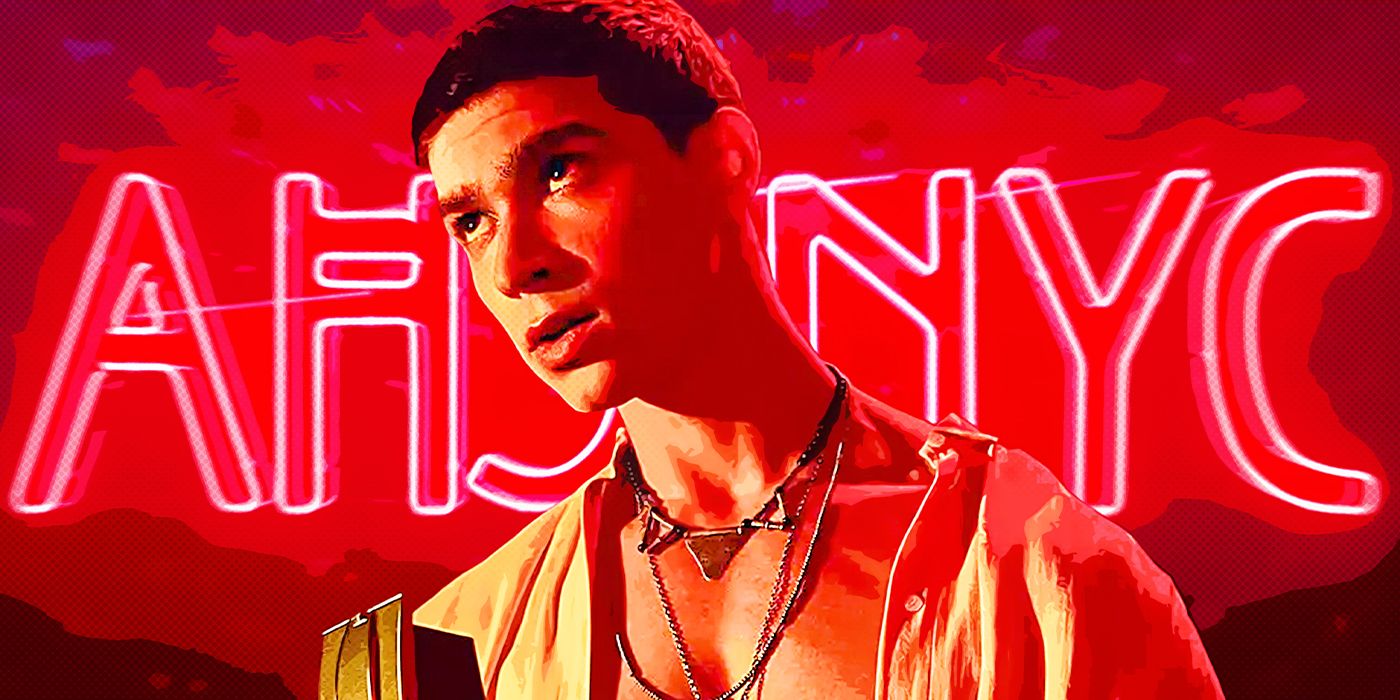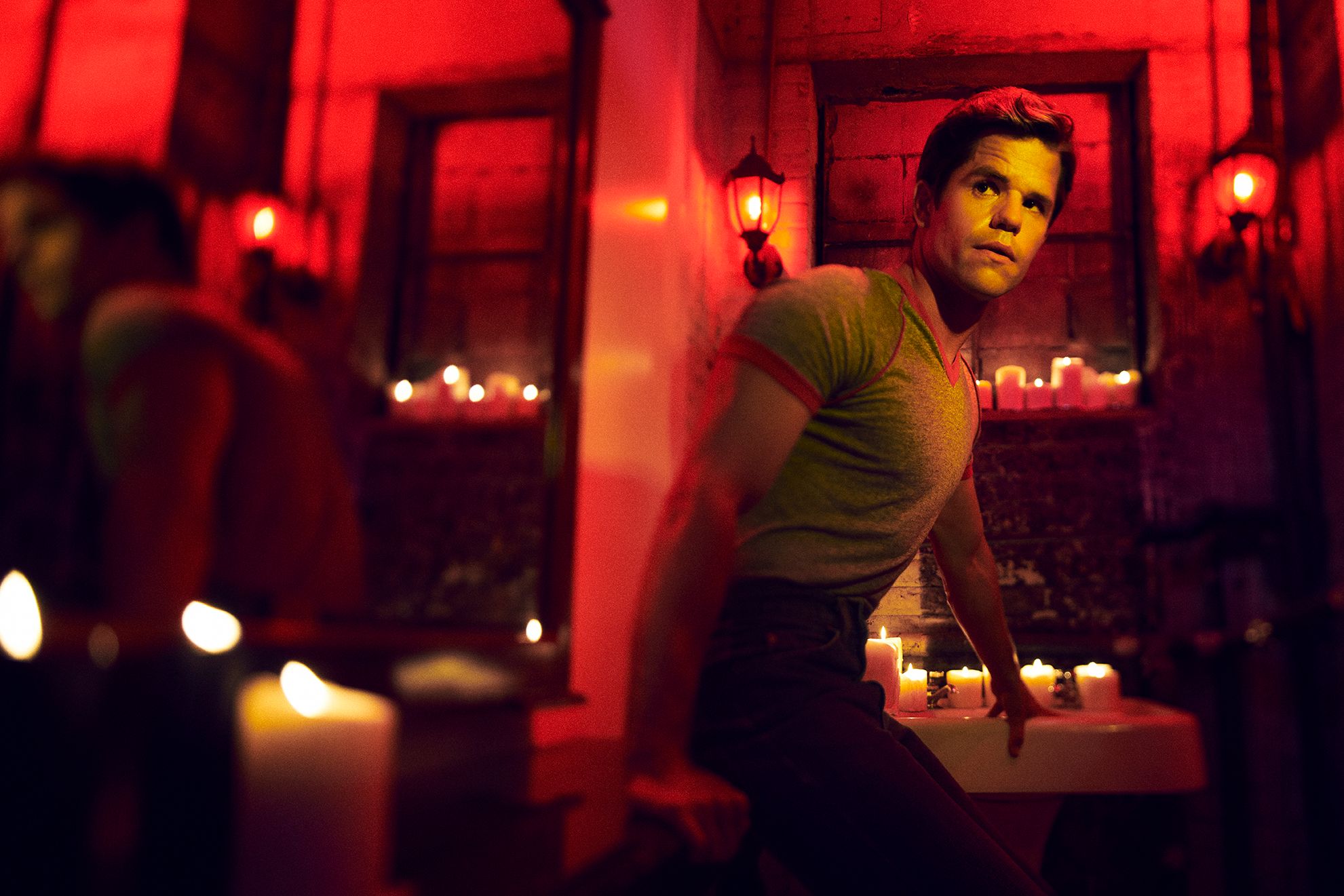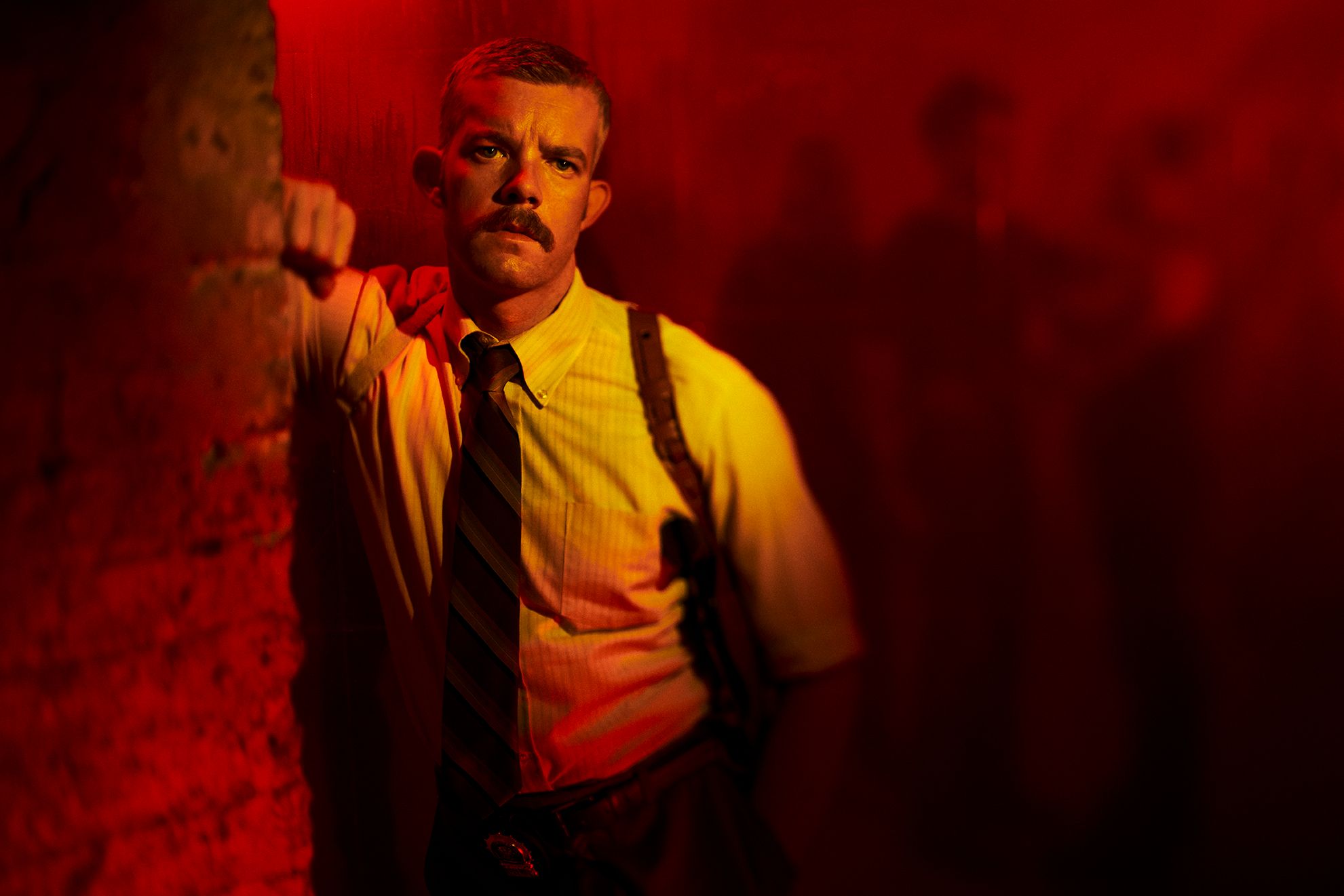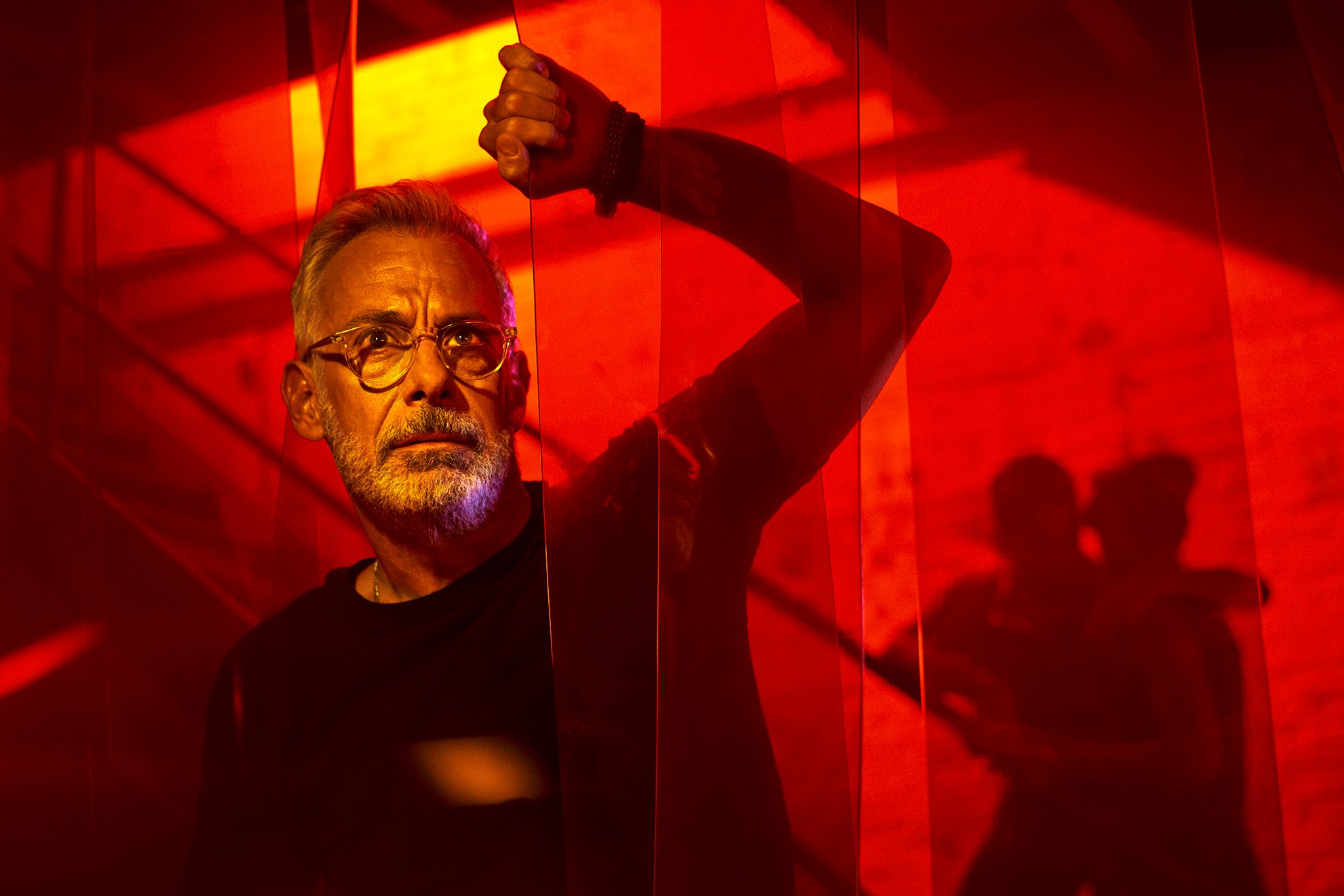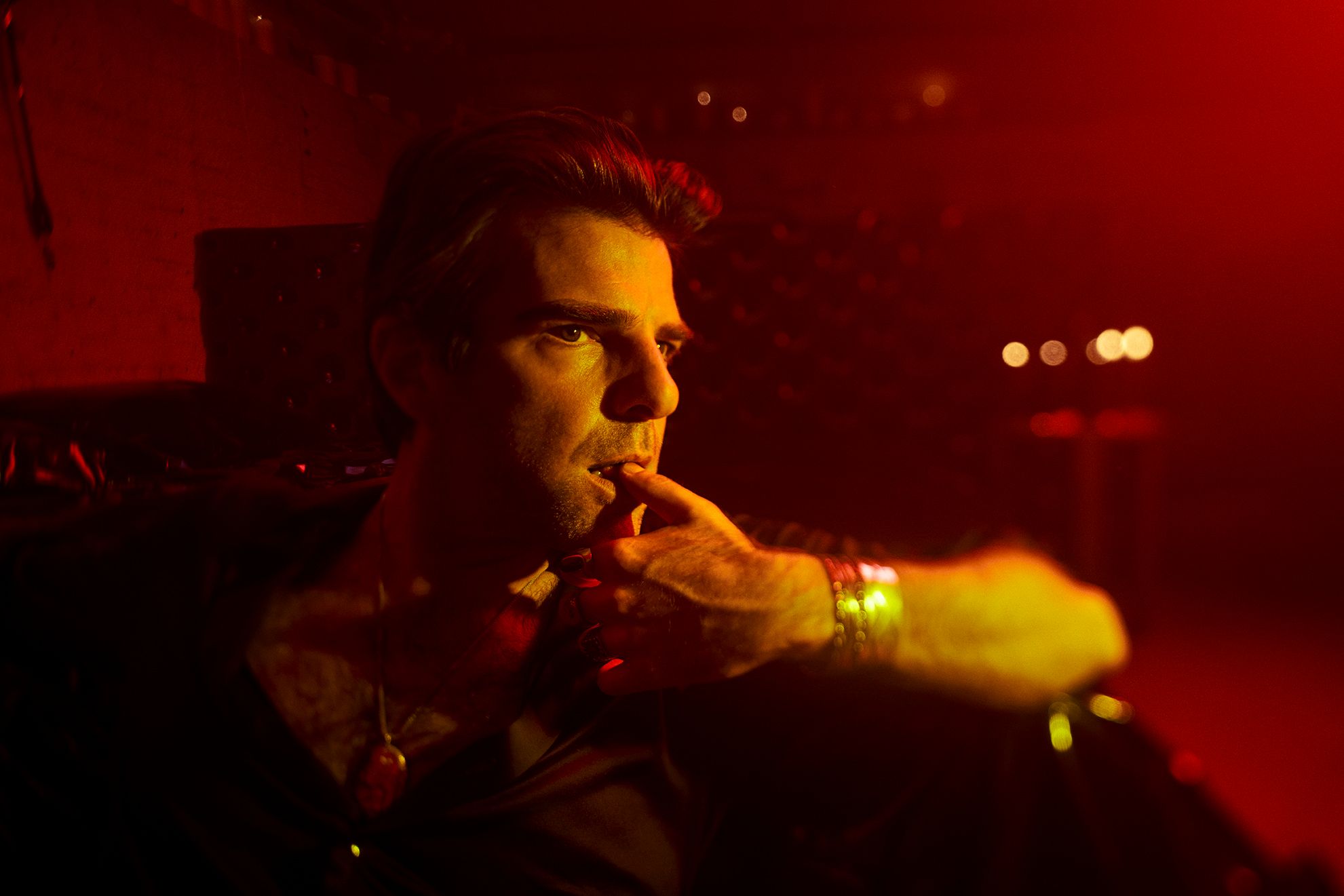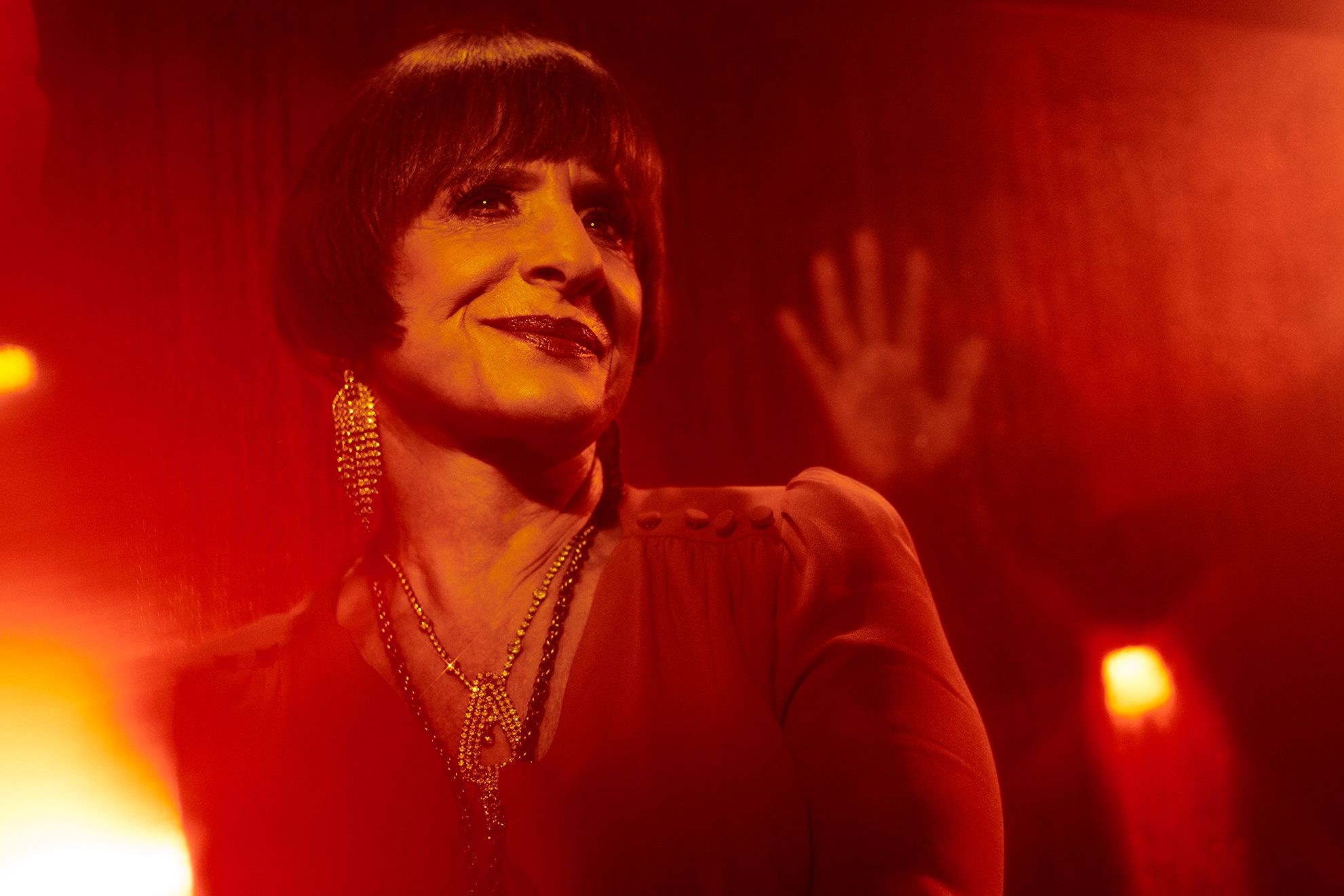He's an Emmy-winning writer, director, and producer who's been pushing the television envelope for over two decades with groundbreaking series like Nip/Tuck, Glee, and Pose. Ryan Murphy has rightfully earned the title of "maverick" for his bold takes on everything from drag culture to the sleazy underbelly of Tinsel Town. Part of what makes Murphy's creations such compelling watching is his willingness to mix reality with fantasy. In the 2019 miniseries Feud, Murphy took two legends, Joan Crawford and Bette Davis, and infused some hefty dramatic license and pure fiction into their stories. He did the same in 2020's Hollywood, taking real-life celebrities and rewriting their fates in a fantasized version of the 1950s film industry. In Murphy's latest season of his fright anthology, American Horror Story: NYC, he takes audiences back to Manhattan in the early 1980s, dotting the scene with characters based on real life figures inhabiting the metropolis amidst plots involving a serial killer stalking gay men and a strange rash appearing on people's skin. And while a heavy dose of suspension of disbelief is a requisite tonic for appreciating most of Murphy's formulations, his tales are more convincing when he gets the details right, because it's that much easier to be swept into his fantasy worlds when he does. When he gets the details wrong, though, it's like an unpleasant electric jolt that bounces the viewer out of the experience. Here are some of the things Murphy gets right - and wrong - about New York City in the 1980s.
The Atmosphere
American Horror Story: NYC opens in the sweltering summer heat of 1981 Manhattan. Murphy captures the heaviness of the city's thick air as sweat-glistened bodies traverse the crowded streets dressed in their period-perfect denim cutoffs, running shorts with white piping, and tight muscle shirts. The series' protagonist, NYPD detective Patrick Read (Russell Tovey), slips into his painted-on Levis 501s and tank top during his off hours. Greenwich Village twunk Adam Carpenter (Charlie Carver) sports a "Seaway Festival 10K Run" t-shirt in one of his earliest scenes, cluing savvy watchers in on the fact that Adam is a transplant from Muskegon, Michigan, home of the annual marathon. Beyond attention to the fashion details of the era, Murphy gets props for a scene featuring characters watching an episode of The Robin Byrd Show. Byrd, an adult film actress, became a huge cult figure in New York with her wildly popular "naughty" late night cable access talk show that started in 1977 and continues to air today.
Murphy also establishes the uneasiness of the city with his allusions to the beginnings of the AIDS epidemic, with the phrase "something is coming" repeated by multiple characters throughout the show. 1981 was the first time the coming health crisis was mentioned in "The New York Native," a newspaper for the gay community. In American Horror Story: NYC, a strange virus appears among the deer population on Fire Island, but in reality, AIDS was first found among chimpanzees in Africa before it jumped to humans. Murphy's decision to make deer the initial carriers of this strange disease likely had to do with the fact that chimpanzees aren't found on Fire Island, and/or an attempt to create a metaphor about innocent creatures dying, but it somewhat negates the otherwise authentic feel of that ominous year.
Along with the pall of AIDS, the city's law enforcement wasn't exactly an ally to gay citizens in the 1980s, either. Harassment of gays by the city's police force was commonplace, and the series accurately captures how the NYPD often dismissed gay-related crimes. Murphy correctly sets this tone, especially in scenes where the closeted Detective Read interacts with his straight co-workers. Where Murphy goes off the rails is in a segment where the cops take young Adam to the precinct for questioning, attempting to get him to reveal a news source by bringing in a muscle-bound brute clad only in a ranger's hat and jockstrap to knock Adam around. While there's little doubt the NYPD had far to go in its relationship with the gay community in the 1980s, it's debatable whether cops stripped down to their "junk armor" to get gay men to talk.
The City's Gay Culture
In the series' opening, a man dons his leather fetish gear and heads to the Chelsea Piers to get some action. Murphy gets this slice of gay culture right. The abandoned shipping terminals along the Hudson River were once bustling gay cruising sites, with their popularity peaking in the early 1980s. The leather culture was also thriving during this time, and bars on Weehawken and West Street near the piers were enormously popular with the "leather and denim" community. Murphy also borrows heavily from Cruising, the 1980 film about a New York police detective (Al Pacino) who goes undercover in the leather community to nab a murderer preying on gay men. In American Horror Story: NYC, the primary plot involves a serial killer victimizing gay men, with Detective Read finding himself drawn to the leather subculture as he searches for the murderer. During his pursuit, Read becomes fascinated with the "hanky code," another piece of 1970s and 80s gay culture Murphy nails squarely. In the days before sexual desires could be communicated via iPhone apps, a handkerchief worn in the back pocket was a covert signal to other gay men, with the color of the handkerchief and its positioning in either the right or left pocket indicating one's preferences and proclivities.
The Characters
American Horror Story: NYC is filled with characters based on real life figures who were prominent in 1980s New York City, and Murphy frequently takes dramatic license with their portrayals. One of the show's main characters, Gino Barelli (The Watcher's Joe Mantello), appears to be based on Lawrence D. Mass, a physician and writer for the gay publication "The New York Native" and the first person to write about the coming AIDS epidemic. In American Horror Story: NYC, Barelli is a journalist, not a doctor, working for "The Downtown Native," and instead of writing about AIDS, he's pursuing the serial killer stalking the city's gay men. While Murphy pays proper homage to Mass, it would have been fascinating to see Barelli's character portrayed as a physician like Mass. In the series opener, Barelli's newspaper office is stormed by three women (led by Sandra Bernhard) angered that the publication is ignoring stories about the lesbian community. These women appear to be based on The Lesbian Avengers, a group of activists who brought attention to issues specific to lesbians in the city. Murphy's way off on the timeline here, though, since the Lesbian Avengers were formed in 1992, 11 years after the time in which the series takes place. Murphy likely used this as a plot device to introduce Bernhard's character Fran, a conspiracy theorist who believes the infections she's seeing among the gay population are being devised by the government to knock off the city's homosexuals. Indeed, there were individuals in the early days of the AIDS crisis who believed the CIA was behind the infections, and Murphy gives voice to those alarmists.
Two characters in the unfolding serial killer plot in American Horror Story: NYC are photographer Theo Graves (Isaac Powell) and his partner/financier Sam (Zachary Quinto). These two are thinly veiled versions of famed 1980s photographer Robert Mapplethorpe and art curator Samuel Wagstaff, Jr. What Murphy gets right in their portrayals is the way in which Sam goads Theo into making his photography more graphic, much like Wagstaff encouraged Mapplethorpe, who began as a photographer of flowers, to incorporate more sexual themes into his work. What Murphy gets wrong, however, is the portrayal of Theo as a victim of Sam's emotional abuse and Sam as a sociopathic sadist who abuses young men and locks them in cages. While Mapplethorpe's and Wagstaff's relationship may have been considered a bit unconventional, they remained together until Wagstaff's death in 1987. Then there's the issue of Sam's appearance - a young man with a body ripped from the pages of a physique pictorial magazine. While Mapplethorpe was an attractive man, no one would have described him as a "gym rat." But Murphy needed to get some of his trademark male objectification into the show, and Isaac Powell delivers in that area.
In the show's early episodes, Adam visits an avant garde performance venue filled with a cadre of oddities and eccentrics. This is a reference to the famous New Wave Vaudeville, a modern variety show featuring "Egyptian slaves, hostesses, robot monsters, geeks, Nazis, emotional cripples," and other assorted misfits from the city's club scene. One of the characters performing is clearly meant to be Klaus Nomi, an iconic figure in the 1980s New York new wave movement, best known for his startling appearance (heavy theatrical makeup and a dramatic hairstyle that accentuated his receding hairline) and operatic singing style. Murphy gets two things wrong here. The New Wave Vaudeville performances took place in 1978, not 1981, and the actor portraying Nomi (Casey Thomas Brown) is American, while Nomi was German. Murphy, however, gets it right with Nomi's demise. In the series, Nomi's character is one of the first to die from whatever mysterious affliction is blanketing the city. Nomi himself was one of the earlier AIDS casualties, passing away in 1983.
In contrast to the young hunks, nonconformists, and assorted lesbian activists in American Horror Story: NYC, there's an older gentleman named Henry (Denis O'Hare), a dandy in a two-piece suit sporting gray hair dramatically styled in a male version of a chignon. Henry is likely patterned after Quentin Crisp, the outspoken British-born author who always dressed to the nines. Crisp left Britain for New York in 1981, where he became one of the city's most well-known public figures. While Murphy gets the timeline correct, like the Klaus Nomi character, Henry is American. Henry's favorite haunt in the series is a bar called the Brownstone, which is likely meant to be the Upper East Side's Townhouse bar, a piano lounge with a conservative dress code that caters to a more mature gay clientele. In one of the show's episodes, the Brownstone is firebombed, resulting in multiple patrons being killed and injured. This event is used for purely dramatic purposes, since the Townhouse never had such an incident.
Then there's Patti LuPone. She plays Kathy Pizzaz, owner and entertainer at The Neptune gay bathhouse. There's little doubt Pizzaz is based on Bette Midler, who began her career as a singer at the Upper West Side's Continental Baths. Midler, however, didn't own or manage the place. That was former financier Steve Ostrow, who opened the baths with his wife in 1968. And again, Murphy gets the timeline wrong here. Midler stopped performing at the Continental in the early 1970s, and the Baths closed in 1976, reopening as the notorious swinger's venue Plato's Retreat in 1977. While an homage to Midler's bathhouse beginnings is almost a necessity for any gay-themed series set in New York City, LuPone's presence seems a bit out of place, given the time period. It also doesn't help that LuPone's Pizzaz, in a scene with Mantello's Barelli, asks him to "do me a solid," a cringe-worthy anachronistic line that takes the viewer out of the time period.
Murphy Successfully Captures the Big Apple's Essence
While Murphy takes some wild detours and gets more than a little fantastical with the individuals and events of early 1980s New York in American Horror Story: NYC, he succeeds at capturing the dark essence of the city at a time when it was on the verge of a seismic shift. This season of the anthology is worth watching, if for no other reason than to get a sense of what it was like to be in the Big Apple just as it was about to have a bite taken out of it.

